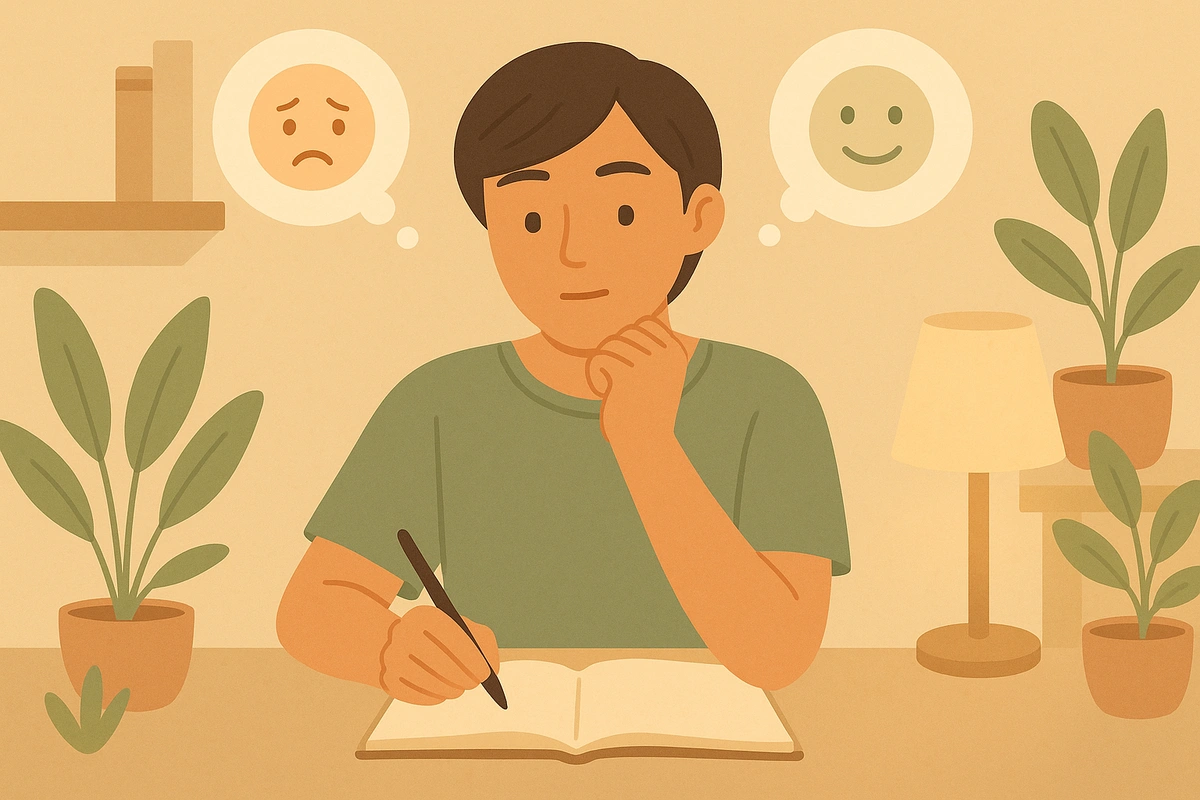Reframing anxious predictions helps you challenge scary thoughts about the future and replace them with balanced, realistic alternatives. This simple thinking technique reduces worry about what might happen and builds confidence in your ability to handle life's challenges.

Practice reframing anxious predictions by catching scary thoughts about the future and questioning whether they're really likely to happen. This cognitive technique helps you develop more balanced thinking patterns that reduce anxiety and increase your sense of control over worrying situations.
Your brain naturally tries to protect you by imagining worst-case scenarios, but this safety system often goes too far and creates unnecessary anxiety. When you worry about future events, your mind tends to focus on everything that could go wrong while ignoring evidence that things might turn out fine. Reframing helps you step back from these anxious predictions and develop more realistic, balanced perspectives.
Reframing anxious predictions works by engaging your prefrontal cortex, the brain region responsible for logical thinking and emotional regulation. When you consciously evaluate scary thoughts, you activate analytical thinking that naturally calms the emotional alarm system.
The process interrupts what psychologists call "rumination" - the tendency to repeatedly focus on negative thoughts that increase anxiety over time. Research shows that breaking rumination cycles significantly reduces both anxiety and depression symptoms.
Anxious predictions often involve cognitive distortions - thinking patterns that make situations seem worse than they really are. By identifying these distortions, you learn to recognize when your thinking is skewed by anxiety rather than based on realistic assessment.
Written reframing engages multiple brain regions involved in language processing and memory formation, making new thinking patterns more likely to stick. Studies indicate that people who write down balanced thoughts show better emotional regulation than those who only think through alternatives mentally.
The evidence-gathering component builds what researchers call "cognitive flexibility" - the ability to consider multiple perspectives and outcomes rather than getting stuck in single negative predictions. This flexibility naturally reduces anxiety because it opens up possibilities beyond worst-case scenarios.
Practice over time creates new neural pathways that make balanced thinking more automatic. Neuroplasticity research shows that repeated cognitive patterns literally reshape brain structure, making positive thinking habits stronger and more accessible during stressful moments.
"My balanced thoughts don't feel believable or convincing" - This is normal initially. Start with thoughts that feel even slightly more realistic than the catastrophic prediction, then gradually work toward more positive alternatives as your confidence grows.
"I can identify the thinking traps but can't come up with alternatives" - Begin by asking "What would I tell a friend in this situation?" or "What evidence contradicts this scary prediction?" Small steps toward balance are better than no change.
"My anxious predictions keep feeling true even after reframing" - Some fears have realistic components. Focus on separating actual risks from exaggerated fears, and include your coping abilities in balanced predictions rather than trying to eliminate all concern.
"I forget to use reframing when anxiety hits" - Set phone reminders to practice during calm periods and consider writing your most common reframes on cards you can carry for quick reference during anxious moments.
"Reframing makes me feel like I'm lying to myself" - Effective reframing acknowledges real challenges while including multiple possible outcomes and your coping resources. It's not positive thinking but realistic thinking that considers fuller picture.
"I get overwhelmed trying to challenge every anxious thought" - Focus on major worry themes rather than every passing anxious thought. Target predictions that significantly impact your daily functioning or cause intense distress.